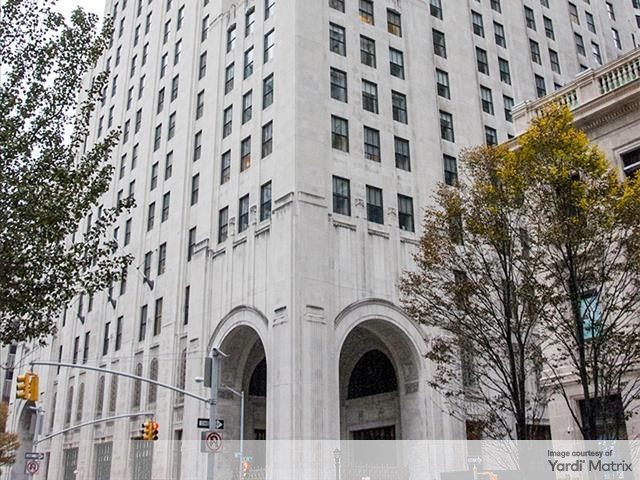4 Tips for Lowering Occupancy Costs in the Office Sector
The odds are good that the office sector will continue to be in workout mode for at least the next two years, says Andy Graiser of A&G Real Estate Partners.
Office landlords around the country are confronting a stark choice—either shift into “workout mode” or risk losing important tenants for good.
Having witnessed firsthand the unsettling trends in the office sector over the past few months, both landlords and their lenders are showing more flexibility, and negotiations with tenants are becoming more productive. While this is especially true in situations where the tenant is trying to stabilize their business, just about every occupier of office space today should be exploring ways to lower occupancy costs.
Here are tips for getting the most out of such efforts.
Be transparent
In the COVID-19 era, landlords are inundated with rent-relief requests. They need to confirm for themselves whether the tenant truly does need a break. In restructuring a lease, be able to provide that landlord with highly detailed financials.
While the landlord needs to understand the likes of your receivables and credit, your big-picture vision for the future matters, too. Office tenants should make a compelling case for how restructuring the lease will support their business strategy and allow them to keep leasing space from that landlord.
Take care with deferred rent
In the early days of the pandemic, there were high hopes for a dramatic, V-shaped recovery that would arrive quickly. It helps explain why both tenants and landlords were so willing to agree to rental deferments as opposed to outright rent forgiveness.
But the recovery has been slower than anticipated. Before agreeing to rental deferments, office tenants need to carefully consider the risk to their businesses of being forced to pay back that rent sometime next year. Remember, in addition to taking in lower revenues as a result of the economic crunch, many office users will be facing additional, landlord-imposed expenses associated with building sanitization, HVAC upgrades, safety-barrier installation and the like.
As an alternative to deferment, explore the possibility of winning other concessions from the landlord. Some office users may want to broaden their options by negotiating a shorter lease term; others (particularly those that are healthier financially) may seek to do precisely the opposite: They could agree to extend the lease in exchange for a rent reduction or other concession. (The landlord benefits because your longer lease adds value to the building.)
Understand your leverage
Especially now, office tenants need to understand what they bring to the table—their impact on that commercial real estate asset. Take some time to think carefully about the factors that contribute to your leverage in the negotiation. For example, if the landlord has a loan coming due, it could be impossible to refinance if your company were to vacate the property. A wide array of factors—from your creditworthiness, to your company’s esteem and recognition in the community—are part of the picture here; make sure you don’t neglect your own value.
But just because you have leverage, that doesn’t mean you should push it to the limit. Office landlords are not fully autonomous; they answer to their lenders. If you occupy a large amount of space, your landlord may be unable to modify your lease without securing lender approval. It’s important to take a clear-eyed view of the situation—one that leaves some room for what it’s like to be in the landlord’s shoes.
Consider the property in full context
Right now, office users are spending a lot of time looking at how the pandemic has affected their customers, revenues and profits. They also need to examine how it may have changed the areas surrounding their office leaseholds.
While it would have been difficult to believe not so long ago, today many American cities are losing population to the suburbs as people seek the safety of wide-open spaces. Your company may have located its HQ in a central business district because of the vibrancy of nearby retail shops and restaurants. If that CBD is now a ghost town, this should be a factor in the lease-restructuring discussion. Even the closure of first-floor restaurants and shops at a building could drive up tenants’ common-area-maintenance fees. Likewise, if half of your employees will be working from home for the foreseeable future, this must be factored into any leasing decisions you make today. The clock is ticking. Don’t put off these hard decisions.
In closing, the dynamics in office, while formerly quite stable, are starting to resemble those of retail, where both landlords and tenants are accustomed to more-frequent adjustments to leases and portfolios. Given what’s happening today, the odds are good that the office sector will continue to be in “workout mode” for the next two years or more.
The time is now to get your square footage aligned with the “new normal and stabilize your business. Fortunately, more and more landlords are willing to play ball. Properly undertaken, portfolio-optimization can better position companies for the challenges of the future—whatever surprises they may hold.
Andy Graiser, Co-President of A&G Real Estate Partners, has decades of experience in real estate portfolio strategy, including dispositions, lease restructurings, valuations and acquisitions. You can contact him at andy@agrep.com.








You must be logged in to post a comment.